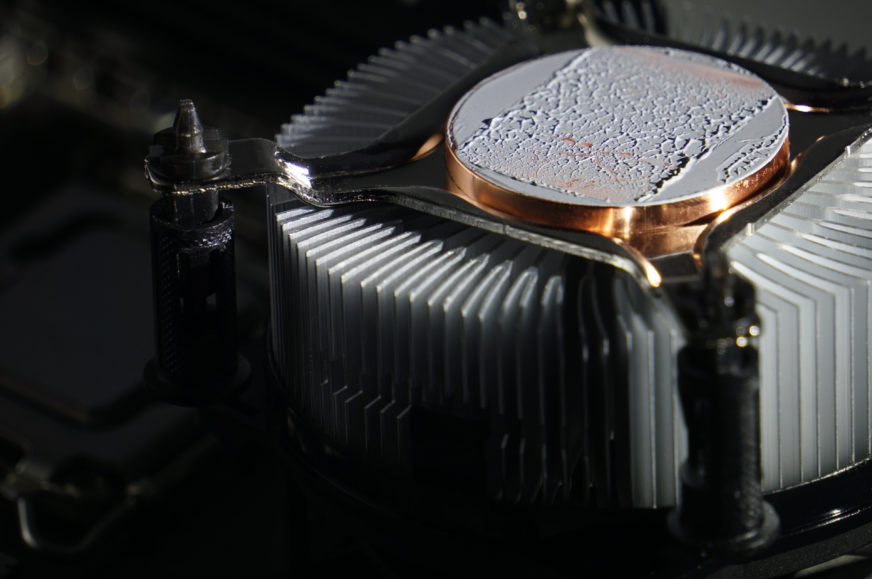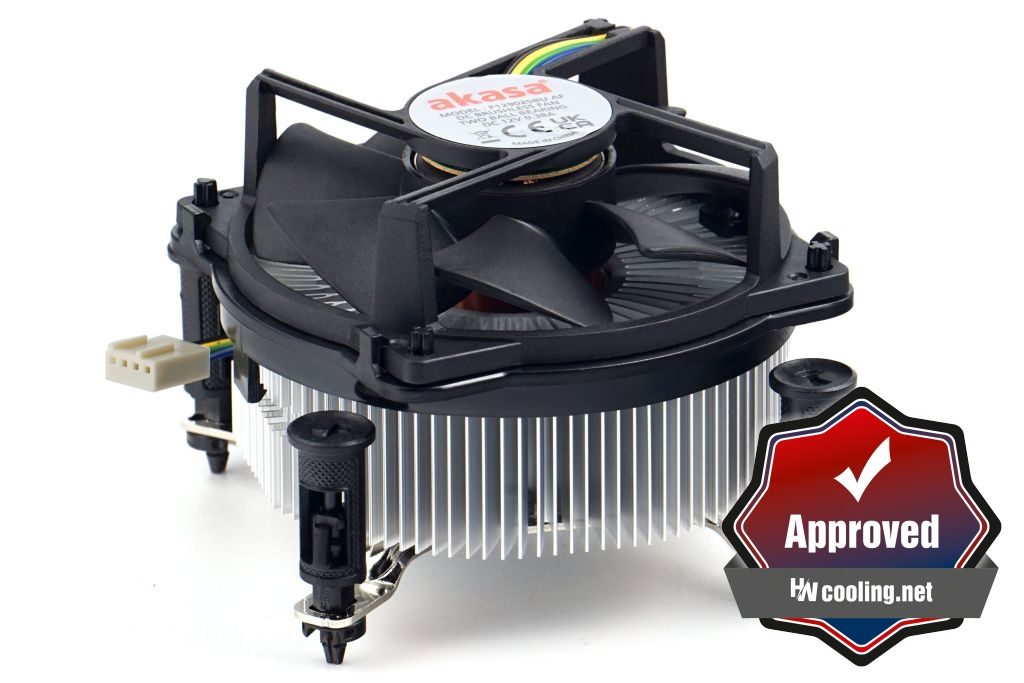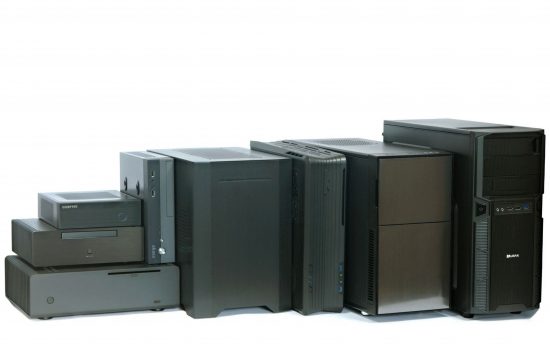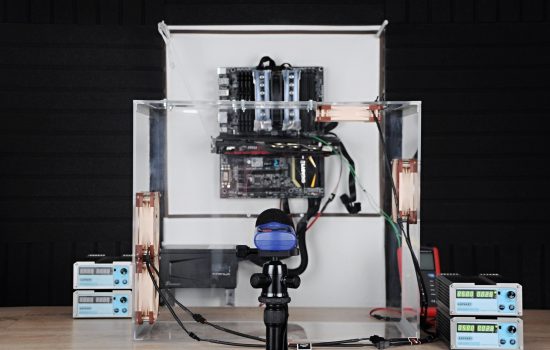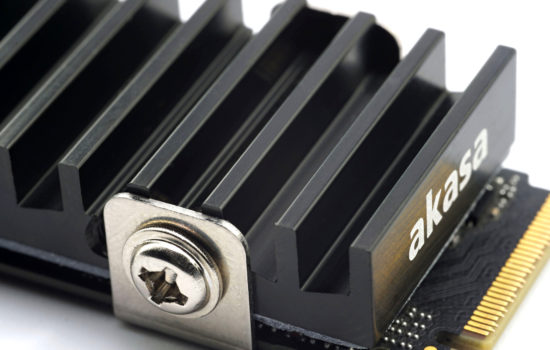Conclusion
The database of results of inexpensive low-profile CPU coolers is slowly growing. We tested the largest of the top-flow models from Akasa on the Intel LGA 1700 platform.Given the claimed TDP of 125 W, it looks like this might not only be a replacement for the Laminar RM1 and RS1 that come with more economical processors, but also a solution for open multiplier models that don’t come with a cooler.
Conclusion
The Akasa cooler beats the competition (including the Alpine 17 CO) for a faster and noisier fan as well. The most significant improvement over the Intel Laminar RM1 is thus when comparing peak performance, at which the Akasa holds a three-degree Celsius advantage over the Core i5-12400 (~93W) without power limits. But this comes at the price of significantly higher noise levels. However, the fan has a wide operating range and can be comfortably slowed down to very low speeds.
The cooling performance of 125 W refers to the maximum speed, and Akasa expects higher temperatures, which the Alder Lake K processors can withstand without compromising performance.
After a significant reduction in speed, the cooler only passed the tests with the TDP-aligned power draw of the test processor (65 W). At medium speeds, the Akasa cooler still holds the lead over the Laminar RM1, although it loses it at lower speeds due to the lower-capacity core. However, the contribution of the copper component is still significant – the cooling performance of the AK-CC6606BP01 doesn’t plummet as steeply as the aluminium monolith Arctic Alpine 17 (CO) with decreasing airflow.
The advantage of the Akasa cooler over the Laminar RM1 and RS1 coolers is always in more effective cooling of the socket. This is a common feature with the overall weaker AK-CC6603EP01. If you were under the impression in its tests that better heat dissipation from the VRM area had anything to do with the tunnel around the rotor, it doesn’t. The AK-CC6606BP01 does not have it, while it achieves similar results in this regard. More effective cooling around the socket will therefore be a good interplay between the profile of the heatsink and the rotor.
The difference in CPU cooling between the Akasa coolers (AK-CC6606BP01 and AK-CC6603EP01) is most pronounced at maximum speeds combined with higher power draw (typical for a Core i5-class processor with no power limits), it’s up to around 7.5 °C there. When aligned to lower noise levels, the more expensive model has as little as 1.5–3 °C of advantage, so it can be a little quieter at the same temperature. From this point of view, the AK-CC6606BP01 is worth the extra price just for the mechanically quieter motor operation. It does not whirr as much as on the AK-CC6603EP01.
However, the retail price of the AK-CC6606BP01 is significantly higher, even compared to the Arctic Alpine 17 CO. Arctic’s cooler always lags a bit behind in efficiency, and it’s also taller, which makes it less compatible with cases, but it sells for less than half the price. On the other hand, the AK-CC6606BP01 is still priced well below more complex heatpipe coolers. There is relatively little competition and if we are talking about the most powerful LGA 1700 cooler under 30 euros with a height under 70 mm, there aren’t many better options than the AK-CC6606BP01 at the moment.
English translation and edit by Jozef Dudáš
| Akasa AK-CC6606BP01 |
| + Decent replacement for Laminar RM1 and RS1 box coolers... |
| + ...can handle processors with TDP 125 W (with PL limitation), but at higher noise level |
| + Above-standard performance at higher speeds |
| + More effective VRM cooling than competing top-flow coolers |
| + Quick and easy installation |
| + Fan with standardized mounting, so you can easily replace it if needed |
| + Ball bearings, high life expectancy |
| - Higher price, compared to the competing Arctic Alpine 17 CO significantly |
| - Weaker price/performance ratio |
| Approximate retail price: 24 EUR |
- Contents
- Akasa AK-CC6606BP01 in detail
- Results: Maximum performance
- Results: Higher performance (45 dBA)
- Results: Medium performance (42 dBA)
- Results: Lower noise level (39 dBA)
- Results: Low noise level (36 dBA)
- Results: Very low noise level (33 dBA)
- Results: Audibility threshold (31 dBA)
- Conclusion





